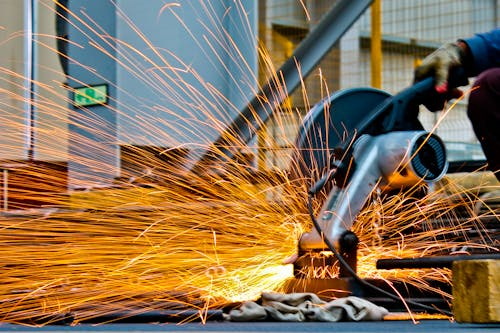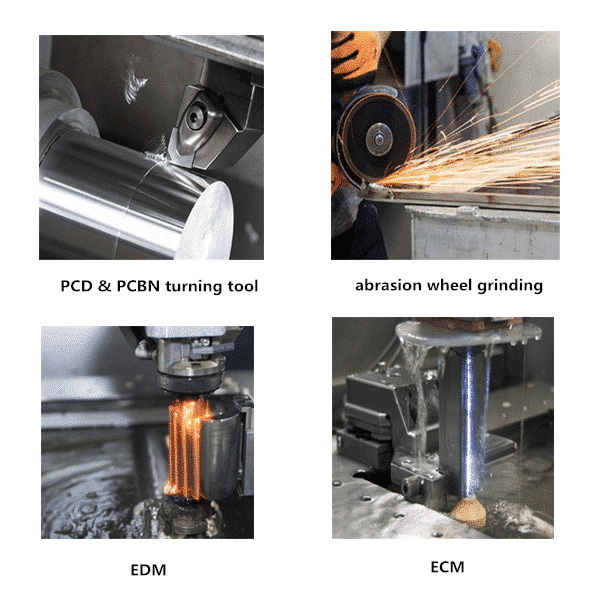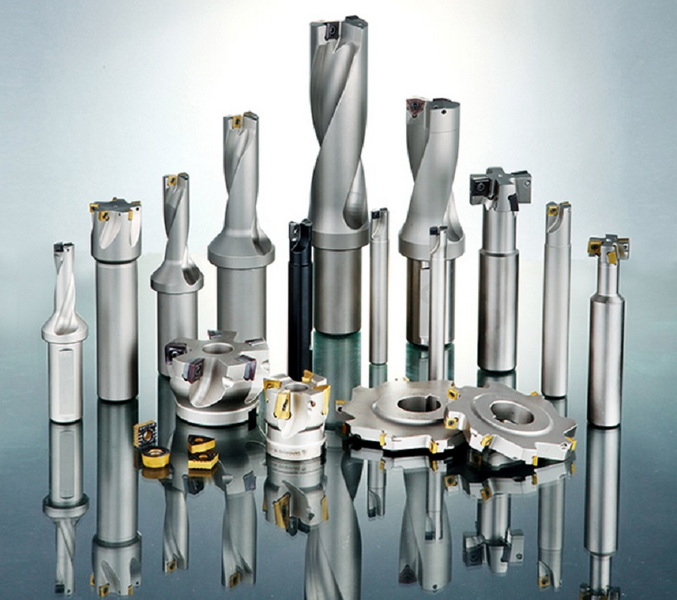Content Menu
● What is Calcium Carbide?
● Major Industrial Applications of Calcium Carbide
>> 1. Acetylene Gas Production
>> 2. Steel and Metallurgy Industry
>> 3. Production of Calcium Cyanamide Fertilizer
>> 4. Manufacture of Polyvinyl Chloride (PVC) and Other Polymers
>> 5. Other Chemical Products
>> 6. Agricultural Applications
>> 7. Specialty Uses
● Safety and Handling Considerations
● Emerging Trends and Innovations in Calcium Carbide Applications
● Conclusion
● FAQ
>> 1. What is calcium carbide mainly used for in industry?
>> 2. How does calcium carbide help in steel production?
>> 3. Is calcium carbide used in agriculture?
>> 4. What are the safety concerns when handling calcium carbide?
>> 5. Can calcium carbide be used to make plastics?
Calcium carbide (CaC₂) is a versatile and essential chemical compound widely used across various industries today. As a high-tech enterprise specializing in the research, production, and sales of carbide products, understanding the broad industrial applications of calcium carbide is vital. This article explores the multiple industrial products and sectors that utilize calcium carbide, highlighting its importance in modern manufacturing, metallurgy, agriculture, and more.

What is Calcium Carbide?
Calcium carbide is a chemical compound composed of calcium and carbon atoms. It appears as a grayish-white solid and reacts vigorously with water to produce acetylene gas (C₂H₂) and calcium hydroxide. This reaction is the foundation for many industrial applications of calcium carbide. It is produced industrially by heating a mixture of lime (CaO) and coke in an electric arc furnace at temperatures around 2200°C.
The unique properties of calcium carbide make it a critical raw material in many chemical processes. Its ability to release acetylene gas upon contact with water provides a convenient and on-demand source of this valuable hydrocarbon, which fuels numerous industrial applications.
Major Industrial Applications of Calcium Carbide
1. Acetylene Gas Production
The most significant industrial use of calcium carbide is in the production of acetylene gas. When calcium carbide reacts with water, it releases acetylene, a highly flammable gas with a high combustion temperature. Acetylene is widely used as a fuel and a chemical building block in various industries.
- Welding and Cutting: Acetylene gas, generated from calcium carbide, is a primary fuel in oxyacetylene welding and cutting processes due to its high flame temperature and efficiency. This method is common in metal fabrication, construction, and repair industries. The oxyacetylene flame can reach temperatures up to 3,500°C, allowing it to cut through thick steel plates and weld metals with precision.
- Lighting: Historically, acetylene produced from calcium carbide was used in carbide lamps for mining, caving, and early automobile headlights. Though largely replaced by electric lights, carbide lamps are still used in some mining operations and recreational caving due to their bright, steady flame and portability.
- Chemical Synthesis: Acetylene serves as a precursor in manufacturing various organic chemicals, including vinyl chloride for polyvinyl chloride (PVC) production, synthetic rubber, and solvents. Its triple bond makes acetylene highly reactive, enabling it to be transformed into a wide array of valuable chemical intermediates.
2. Steel and Metallurgy Industry
Calcium carbide plays a crucial role in steelmaking and metal processing:
- Desulfurization: It is used to remove sulfur impurities from molten iron and steel, improving metal quality and strength. Sulfur in steel can cause brittleness and reduce ductility. Calcium carbide reacts with sulfur to form calcium sulfide, which can be separated from the metal, resulting in cleaner and more durable steel.
- Deoxidation: Calcium carbide acts as a deoxidizing agent, removing oxygen from molten metals during ladle treatment, enhancing the purity of steel and alloys. Oxygen can cause defects like blowholes and inclusions in metal products, so its removal is critical for high-quality steel.
- Production of Metal Powders: It is involved in producing tungsten carbide and other metal powders used in cutting tools and industrial machinery. Tungsten carbide, known for its extreme hardness and wear resistance, is a key material in machining and mining tools.
3. Production of Calcium Cyanamide Fertilizer
Calcium carbide reacts with nitrogen gas at high temperatures to produce calcium cyanamide (CaCN₂), a nitrogenous fertilizer widely used in agriculture to enhance soil fertility and stimulate plant growth. Calcium cyanamide also acts as a herbicide and soil conditioner, making it a multifunctional agricultural input.
This fertilizer is especially valuable in regions where synthetic nitrogen fertilizers are expensive or unavailable. Its slow-release properties help maintain soil nitrogen levels over time, promoting sustained crop yields.
4. Manufacture of Polyvinyl Chloride (PVC) and Other Polymers
Calcium carbide is a key raw material in the synthesis of vinyl acetylene, which is subsequently polymerized to produce PVC, a plastic used extensively in pipes, cables, packaging, and construction materials. PVC is one of the most widely produced plastics worldwide due to its durability, chemical resistance, and versatility.
In addition to PVC, acetylene derived from calcium carbide is used to produce synthetic rubbers and other specialty polymers, supporting industries such as automotive, electronics, and consumer goods manufacturing.
5. Other Chemical Products
Calcium carbide is used to produce several other chemicals:
- Calcium Hydroxide: A byproduct of the acetylene production reaction, calcium hydroxide (slaked lime) is widely used in water treatment, paper manufacturing, and construction.
- Acetylene Black: A form of elemental carbon produced from acetylene, used as a reinforcing agent in automobile tires and rubber products. Acetylene black improves the strength, durability, and conductivity of rubber compounds.
- Synthetic Rubber: Calcium carbide-derived acetylene is a precursor in synthetic rubber manufacturing, which is essential for producing tires, seals, and various industrial components.
6. Agricultural Applications
Beyond fertilizer production, calcium carbide is sometimes used as a fruit ripening agent due to the acetylene gas it produces. When applied to fruits, acetylene mimics the natural plant hormone ethylene, accelerating ripening.
However, this practice is regulated or banned in some countries due to potential health risks from impurities in commercial calcium carbide, such as arsenic and phosphorus compounds. Safer alternatives like ethylene gas are preferred in modern agriculture.
7. Specialty Uses
- Toy Cannons and Fireworks: Calcium carbide is used in traditional toy cannons and small pyrotechnic devices like bamboo cannons, where it reacts with water to produce acetylene gas that ignites and creates a loud sound.
- Mole Repellent: When calcium carbide contacts soil moisture, the acetylene gas released helps repel moles and other burrowing pests, offering a chemical-free pest control method.
- Soil Moisture Testing: Calcium carbide reacts with soil moisture to release acetylene gas, whose pressure measurement helps determine soil water content. This technique provides a quick and reliable method for agricultural and environmental monitoring.

Safety and Handling Considerations
Calcium carbide is highly reactive with water, releasing flammable acetylene gas and heat, which pose fire and explosion risks. It must be stored in dry, well-ventilated areas away from moisture. Packaging standards and strict transport regulations are essential to ensure safety during handling and shipping.
Workers handling calcium carbide should wear protective equipment such as gloves and goggles to prevent skin and eye contact. Proper training in emergency response and spill management is critical to minimize accidents.
Environmental considerations also play a role, as improper disposal of calcium carbide residues can lead to soil and water contamination. Responsible manufacturing and waste management practices are necessary to reduce environmental impact.
Emerging Trends and Innovations in Calcium Carbide Applications
As industries evolve, new applications and improvements in calcium carbide usage continue to emerge:
- Green Steel Production: Calcium carbide is being explored as an environmentally friendly agent in steelmaking, helping reduce sulfur and oxygen content without relying on more polluting chemicals.
- Advanced Polymers: Research is ongoing to utilize acetylene derived from calcium carbide in developing novel polymers with enhanced properties for electronics and medical devices.
- Renewable Energy: Acetylene gas generated from calcium carbide is being tested as a clean fuel source in specialized applications, potentially contributing to sustainable energy solutions.
- Nano-materials: Calcium carbide is used in synthesizing carbon nanotubes and graphene-like materials, which have promising applications in electronics, energy storage, and composites.
These innovations highlight the continuing relevance and adaptability of calcium carbide products in modern industry.
Conclusion
Calcium carbide remains an indispensable industrial chemical with diverse applications spanning welding, metallurgy, chemical manufacturing, agriculture, and specialty uses. Its ability to generate acetylene gas underpins many industrial processes, from cutting metals to producing plastics like PVC. Additionally, calcium carbide's role in steel desulfurization and fertilizer production highlights its importance in foundational industries. As global demand for steel, plastics, and agricultural products grows, calcium carbide products will continue to be critical in supporting industrial development and technological advancement.
Moreover, ongoing research and innovation promise to expand the utility of calcium carbide, making it a key player in emerging fields such as green manufacturing, advanced materials, and renewable energy. For companies engaged in carbide product development and production, understanding these applications is essential to meeting market needs and driving future growth.

FAQ
1. What is calcium carbide mainly used for in industry?
Calcium carbide is primarily used to produce acetylene gas, which is essential for welding, cutting metals, and as a chemical feedstock for producing plastics like PVC and synthetic rubber.
2. How does calcium carbide help in steel production?
It acts as a desulfurizing and deoxidizing agent, removing impurities such as sulfur and oxygen from molten steel, thereby improving metal quality and strength.
3. Is calcium carbide used in agriculture?
Yes, it is used to produce calcium cyanamide fertilizer and sometimes as a fruit ripening agent, although the latter is regulated due to safety concerns.
4. What are the safety concerns when handling calcium carbide?
Calcium carbide reacts violently with water, producing flammable acetylene gas and heat. It must be stored dry and handled carefully to avoid fire or explosion hazards.
5. Can calcium carbide be used to make plastics?
Yes, acetylene derived from calcium carbide is a key raw material in the production of vinyl chloride monomer, which polymerizes into PVC, a widely used plastic.
















